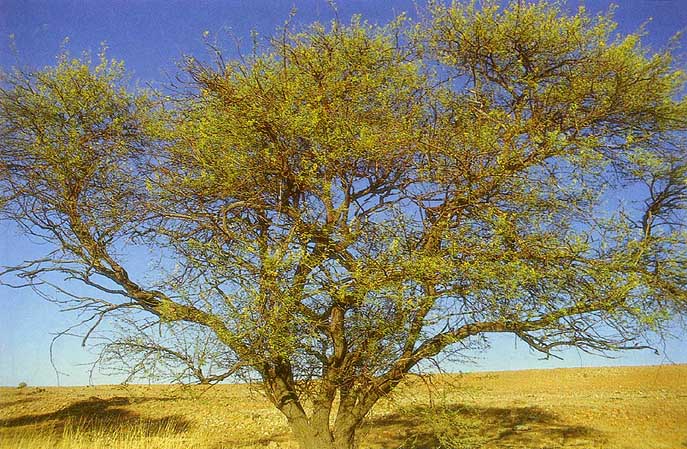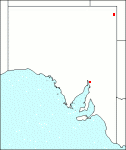Family: Fabaceae
Acacia nilotica

Derivation: Named by Linnaeus from seed that came from Egypt and hence associated with the River Nile.
Synonymy: Not Applicable Common name: None
Description:
Spreading tree to 10 m, branchlets pubescent when young; stipular spines to 5 cm long, white, straight, not always present on all shoots.
Leaves bipinnate, the axis 3-6cm long with inconspicuous petiolar gland; pinnae commonly 1-5 pairs, leaflets 10-25 pairs 3-6 mm long, 0.5-1.5 mm wide, more or less glabrous.
Inflorescence a cluster of 2-6 pubescent axillary peduncles 1.5-2 cm long with a bract about mid point. Flowers showy, golden, 5-partite.
Legume 6-20 cm long, stipitate, flattened, constricted between seeds to almost orbicular units, sticky inside, densely white-tomentose outside. Seeds discoidal 7-9 mm diameter, areole large, circular.
|
|
Distribution:
|
The subspecies was originally from India but is now naturalised on Clifton Hills Station in the north-east of South Australia and in Queensland where it is cultivated and extensively naturalised particularly in northern parts of the State. Due to its prominent spines it can form impenetrable thickets.
|
Flowering time: In flower between February and July and in pods in October and November.
|

SA Distribution Map based
on current data relating to
specimens held in the
State Herbarium of South Australia
|
Biology:
No text
Taxonomic notes:
In the absence of spines and legumes it may be confused with A. farnesiana. The latter is a large shrub rather than a tree, generally has shorter spines and the legumes are only 4-7 cm long, turgid when mature, dark brown to black and not hoary tomentose. The bract near the middle of the peduncle is also helpful in identifying A. nilotica.
Hillman (1989) reported that the seeds of A. nilotica were an important seed source for 'early seed gatherers of Africa'.
A. nilotica was first collected in South Australia by Dr H. Basedow in 1919 at Cordillo Downs. It is still only in that area. It may have reached Cordillo Downs from Queensland where it is extensively naturalised.
A. nilotica is declared noxious throughout Queensland, Kleinschmidt & Johnson (1977) where it is described and illustrated. Young foliage is however palatable.
Author:
Not yet available
Source:

|

